Dusk in the Arctic morning
LONGYEARBYEN, Norway, March 20, 2015 – I’ve been interested in astronomy ever since I was a kid. Late last year I left my job as an AFP news photographer to pursue a documentary project – as well as the night sky and astronomy photography that I love.
I’ll shoot any kind of event like this, and I've seen partial eclipses before – but I’ve always wanted to see a total solar eclipse.
A friend from the Amateur Astronomers Association of New York told me in November he planned to travel for the event to Norway's Arctic Svalbard archipelago, one of only two places with the Faroe Islands which would be experiencing “totality”. I looked at the organisers’ website and it all looked very professional, so I signed up.
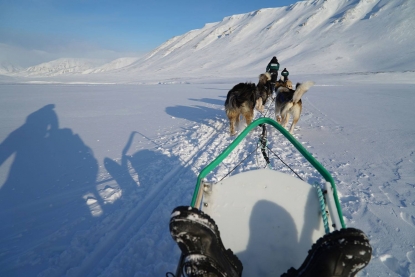
Dog sledding outside Longyearbyen, Svalbard, on March 19, 2015 (Stan Honda)
It turned out a second friend from the astronomy club was also going, along with a university professor from Arizona who they met at a previous eclipse in Kenya. We all flew to Oslo to meet the tour people, then carried on Wednesday to Longyearbyen, the “capital” of Svalbard, on board two charter planes.
Day one was spent dog sledding and generally getting a feel for the place. We were staying in one of just three hotels in Longyearbyen – a tiny place ringed with mountains, with just 2,000 year-round residents, and very quiet apart from the tour buses full of eclipse chasers!
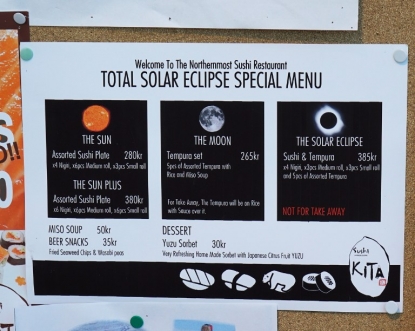 An eclipse-themed restaurant menu in Longyearbyen, Svalbard, on March 19, 2015 (AFP Photo / Stan Honda)
An eclipse-themed restaurant menu in Longyearbyen, Svalbard, on March 19, 2015 (AFP Photo / Stan Honda)We heard of an incident that night, a tourist who was mauled by a roaming polar bear. But I must say we always felt safe in our group: there has been a guard with a rifle on every outing we made outside the town.
The morning of the eclipse, I arrived at the viewing site at around 7:30 am, with a group of people wanted to go early to set up their equipment. It was -17 Celsius. But despite the cold, people were very excited. The weather was perfectly clear.
 Watching the partial phase of a total solar eclipse in Longyearbyen, Svalbard, on March 20, 2015 (AFP Photo / Stan Honda)
Watching the partial phase of a total solar eclipse in Longyearbyen, Svalbard, on March 20, 2015 (AFP Photo / Stan Honda)At high noon here the sun is 12 degrees above the horizon, so the light in Svalbard is ALWAYS nice. But still, it was a relief to many people – including myself – to see the sun was shining, lighting up the snowy slopes around us with a pink glow.
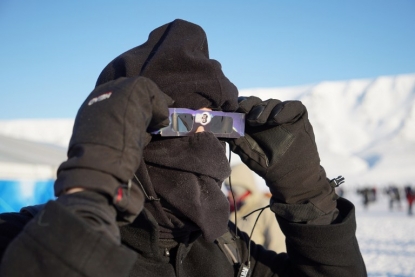
A man dressed for the cold watches the partial phase of the solar eclipse in Longyearbyen, Svalbard,
on March 20, 2015 (AFP Photo / Stan Honda)
Everyone was happy, and bleary-eyed. People were spread out over a large snow-covered area, about 400 of us in all. There was a large warming tent set up by the tour company, who served up coffee and tea and handed out reindeer skin blankets to keep out the cold.
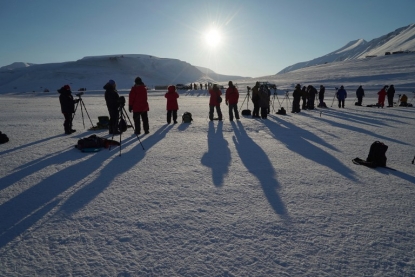 Watching the partial phase of a total solar eclipse in Longyearbyen, Svalbard, on March 20, 2015 (AFP Photo / Stan Honda)
Watching the partial phase of a total solar eclipse in Longyearbyen, Svalbard, on March 20, 2015 (AFP Photo / Stan Honda)Some of the crowd had seen a total eclipse before, so were telling us first-timers what to expect. Even then, it was such a wild thing.
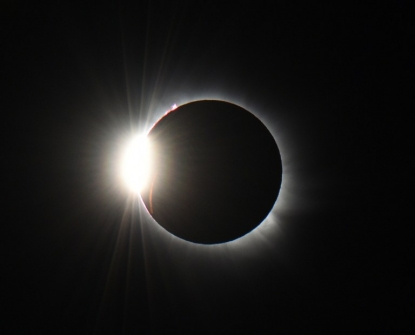
The sun begins to move completely behind the moon during a total solar eclipse viewed from
Longyearbyen, Svalbard on March 20, 2015 (AFP Photo / Stan Honda)
The thing that surprised me was how dark it got. Like a deep twilight, I couldn't read my camera controls at first. When it went total, there was a big noise from the crowd and some cheering. The total part lasted over two minutes, but it actually seemed like a long time.
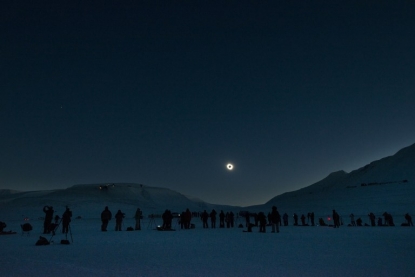 Watching the total solar eclipse in Longyearbyen, Svalbard, on March 20, 2015 (AFP Photo / Stan Honda)
Watching the total solar eclipse in Longyearbyen, Svalbard, on March 20, 2015 (AFP Photo / Stan Honda)There was a talk yesterday to the tour group by Jay Anderson, a weather expert who has seen 25 or so total eclipses. He described in detail the different stages of the phenomenon - but mainly told people to not worry about taking photos, just to look with your eyes and experience it.
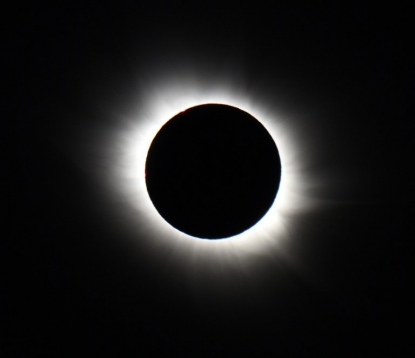 Watching the total solar eclipse in Longyearbyen, Svalbard, on March 20, 2015 (AFP Photo / Stan Honda)
Watching the total solar eclipse in Longyearbyen, Svalbard, on March 20, 2015 (AFP Photo / Stan Honda)I like shooting photos, so I'm just used to doing that, then reliving the experience later.
But for a few seconds, when it went total, I think I just looked up and thought, Wow. A really incredible experience. I had some triggering devices for my cameras so I could look up at the same time, which I did. Very surreal.
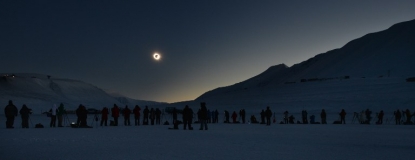
The sun begins to appear from behind the moon during a total solar eclipse viewed in Longyearbyen, Svalbard,
on March 20, 2015 (AFP Photo / Stan Honda)
I got some shots that I hoped for, some that came as a surprise, and I made a few mistakes. But overall I'm happy. I felt very fortunate to be here. And I hope the photos I sent allow people to share a small fraction of the experience.
Right now I feel very tired, but energized. And the show is not over yet: in an hour we are off again - this time to watch the aurora borealis…
Stan Honda is an independent photographer based in New York. Follow him on Instagram or visit his website.
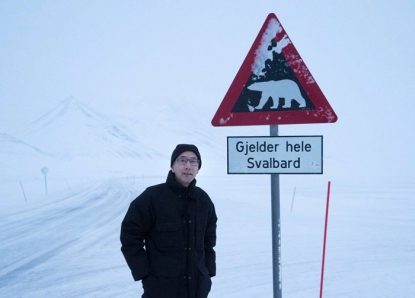
Stan Honda, staying well clear of polar bears in Longyearbyen, on March 19, 2015 (Stan Honda)


